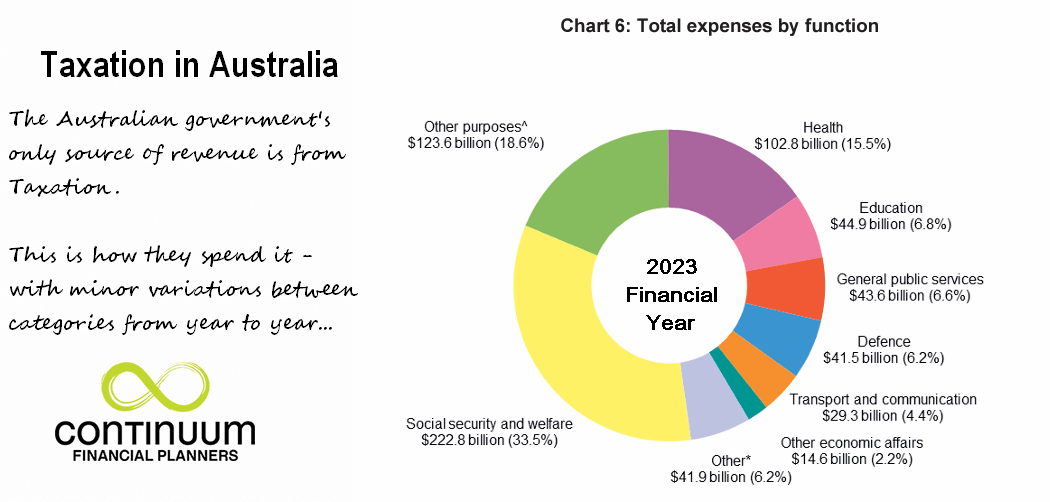Capital gains tax (CGT) is a tax payable on the increase in the capital value of investments. This tax becomes due when a CGT event occurs. The assessable portion of the increase is determined under a series of ‘rules’ and discounts. There are a number of CGT events that can happen in relation to an asset. However, the two main ones occur when an asset is sold, or when an asset is transferred. These events crystallise the requirement to pay the relevant amount of Capital Gains Tax. Assessable income from a CGT event is taxed in your hands in the same manner as other assessable income. Capital Gains Tax is a specialist area of taxation practice. Therefore, any concerns you have should be discussed with your taxation consultant.
Capital gains tax (CGT) is a tax payable on the increase in the capital value of investments when a CGT event occurs. The assessable portion of the increase is determined under a series of ‘rules’ and discounts. There are a number of CGT events that can happen in relation to an asset, however the two main ones occur when an asset is sold, or when an asset is transferred. These events crystallise the requirement to pay the relevant amount of Capital Gains Tax. Assessable income from a CGT event is taxed in your hands in the same manner as other assessable income. Capital Gains Tax is a specialist area of taxation practice and any concerns you have should be discussed with your taxation consultant.
Which assets are subject to this tax consideration?
CGT can apply to all forms of property, including real estate, shares, unit trusts, options, debts, rights, goodwill and foreign currency.
However, no CGT liability will arise from the disposal of certain assets. These include:
- Assets acquired before 20 September 1985,
- Your family home, or a deceased person’s home where it is sold within 2 years of the date of death,
- Some personal use assets, and
- Some small business assets.
How is the capital gain calculated?
The two pieces of information which are necessary to calculate the capital gain on an asset are the asset’s cost base and its disposal price. The cost base of an asset is its cost to you. In calculating the cost base of an asset it is necessary to:
- Determine the actual purchase or acquisition cost,
- Add to that any additional costs which increase the cost of acquiring or holding the asset, and
- Subtract any amounts, which reduce the cost of acquiring or holding the asset.
For assets held for at least 12 months, you (as an individual) will have the choice of including in your assessable income either:
- Half of the realised nominal gain (the CGT discounting method), or
- The whole of the difference between the disposal price and the frozen indexed cost base as at 21 September 1999. (This concerssion only applies to assets acquired before 21 September 1999).
For complying superannuation funds, if the asset has been held for at least 12 months, the superannuation fund will have the choice of including in its assessable income either:
- Two-thirds of the nominal gain, or
- The whole of the difference between the realised price of the asset and its frozen indexed cost base as at 21 September 1999. (This concerssion only applies to assets acquired before 21 September 1999).
Where the asset has been held for less than 12 months, there is no reduction, and the capital gain is simply assessable income.
For companies, the CGT discounting method is not available. Companies must include the difference between the sale price of the asset and its cost base in their assessable income. If the company’s asset was acquired before 21 September 1999, indexation of acquisition costs can be applied.
What about capital losses?
Capital Gains Tax basics include rules for the treatment of Capital Losses. If a loss is made from the sale of an asset (that is, the purchase price for the asset was more than you sold it for), you have a capital loss which can be used to offset capital gains made in the same or future income years. You must reduce the amount of the gain by capital losses before applying the discount.
Note: It is important that records of the acquisition costs and any substantial improvement costs are retained for an appropriate period beyond the date of disposal. These records will be required to calculate any gains. They are also necessary to justify the calculation should the ATO so require.
Continuum Financial Planners Pty Ltd has a team of experienced advisers available to assist you. We help develop wealth management strategies to minimise the impact of Capital Gains Tax on your wealth. We will listen to your circumstances, ensure we understand any dilemmas and we will find solutions to help you optimise your wealth protection.
To make an appointment with one of our advisers –
- phone our office 07-34213456, or
- at your convenience, use the linked Book A Meeting facility.
(This article was originally posted by us in August 2009. We occasionally refresh/ update it, most recently in June 2025.)

